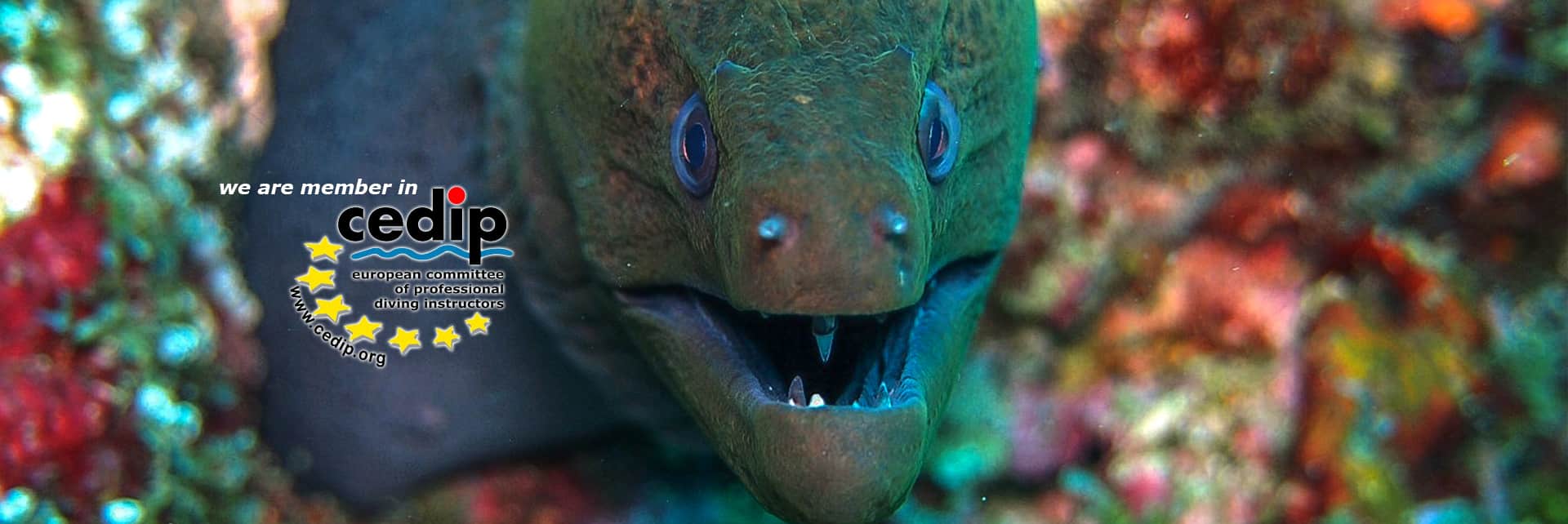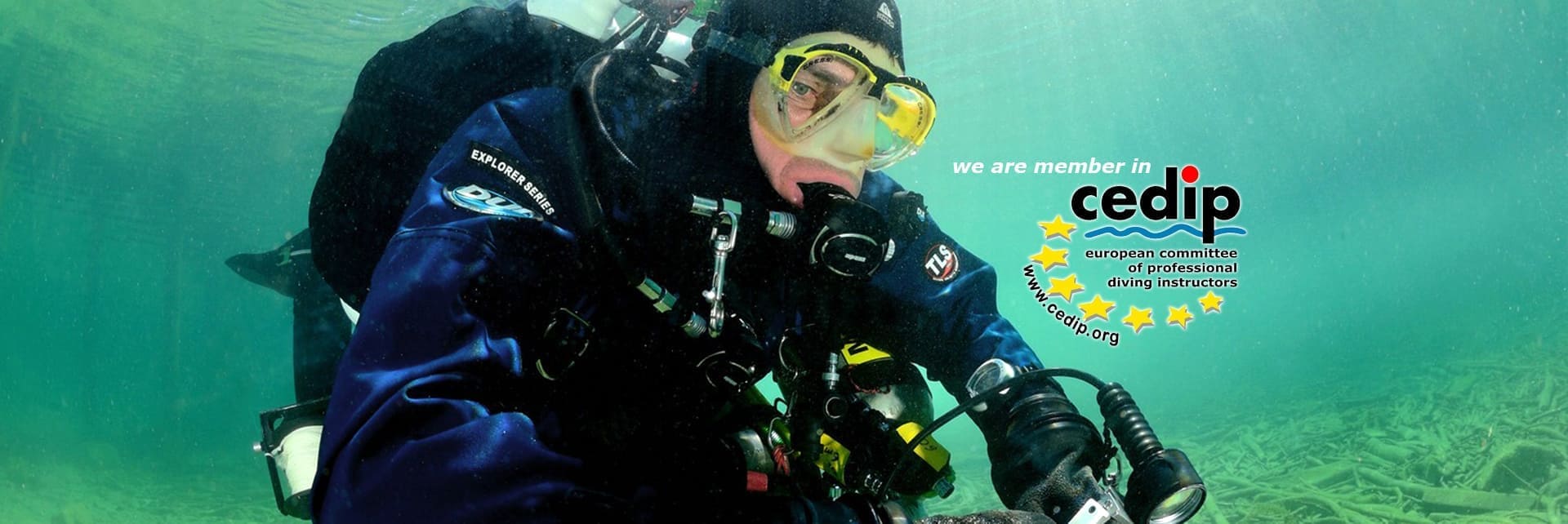The Mediterranean
Mediterranean marine communities can be observed almost on our doorstep ( Croatia, Italy, Spain ). Perhaps not quite as diverse as in tropical waters, nor in such a large number of species and individuals, but the Mediterranean communities hold many surprises.
On the rugged rocky coasts, which usually continue under water, the diver sees organisms under larger boulders, or at cave entrances and rock breakthroughs, which one can otherwise only find at greater depths.
This is due to the clearly perceptible cooling under the mostly pronounced thermoclines, but above all due to the light conditions, which in crevices, under rock roofs and in caves are very similar to those that prevail at greater depths. Sponges, moss animals, colorful nudibranchs, but also typical Mediterranean fish such as the conger, sea peacock and many more can be admired.
In and around the Mediterranean, however, we can also observe the major changes in this system, such as the immigration of invasive species through the Suez Canal, the effects of rapid water warming on many organisms and biotic communities, the impact of mass tourism, the effects of massive plastic pollution and much more










